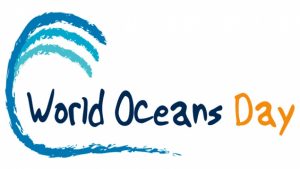
The following article appeared in our . We are sharing it here today in honor of World Oceans Day, which takes place every June 8 to encourage people around the world to celebrate, honor and protect our oceans.
CLEANING UP OUR OCEANS WITH SIMULATION
The Ocean Cleanup is designing and developing advanced technologies to rid the world’s oceans of plastic that comes in by millions of tons. The organization relies on the XFlow CFD solution by SIMULIA.

A significant percentage of this plastic drifts into large systems of circulating ocean currents, also known as gyres. Once trapped in a gyre, the plastic will remain there, while breaking down into microplastics over time, and making it increasingly likely that sea life will mistake the plastic for food. Going after plastic with vessels and nets is costly, time consuming, labor intensive and leads to vast amounts of carbon emission and by-catch.
That is why The Ocean Cleanup is developing a passive collection system that moves with the currents – just like the plastic. The Ocean Cleanup’s passive system consists of a floater with an impermeable screen underneath, which concentrates the debris so that it can be easily extracted and brought to shore for recycling.
The Ocean Cleanup is using XFlow computational fluid dynamics (CFD) software, developed by Dassault Systèmes’ brand, SIMULIA, to improve the efficiency of its system designs for capturing plastics. Bénédicte Dommergues, a modeling engineer at The Ocean Cleanup, presented their achievements with XFlow at the 2017 XFlow User Conference held in Madrid, Spain.
In her presentation, Dommergues demonstrated how XFlow CFD simulations enabled researchers to study the effect of the scree design on its drag and on the flow around it. The screen is important for the system because it slows down the floating barrier and creates a difference in speed between the plastics and the barrier, allowing the strainer to concentrate and extract the plastics.
The importance of the topic and the high quality of this work led to the project receiving the conference attendees’ vote for the Best Presentation, awarded by David Holman, Vice President R&D, SIMULIA Brand Leader.
“Being able to use XFlow in the design process of our systems helped us meet The Ocean Cleanup’s ambitious timeline. XFlow was able to deliver insightful results in record time, allowing for fast iterations which addressed the complex multiphysics problems – free-surface, turbulence, particle transport,fluid structure interaction, porous media – involved in the capture efficiency of The Ocean Cleanup systems.” BRUNO SAINTE-ROSE, Lead Computational Modeler, The Ocean Cleanup

